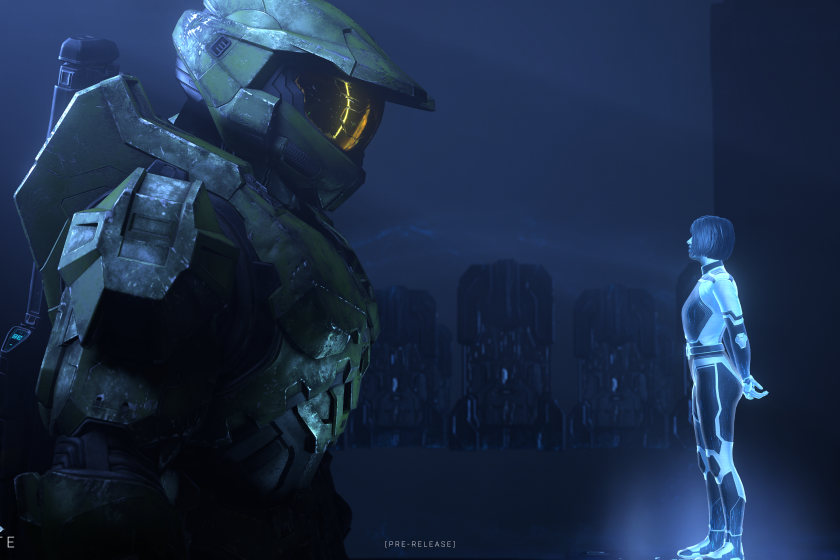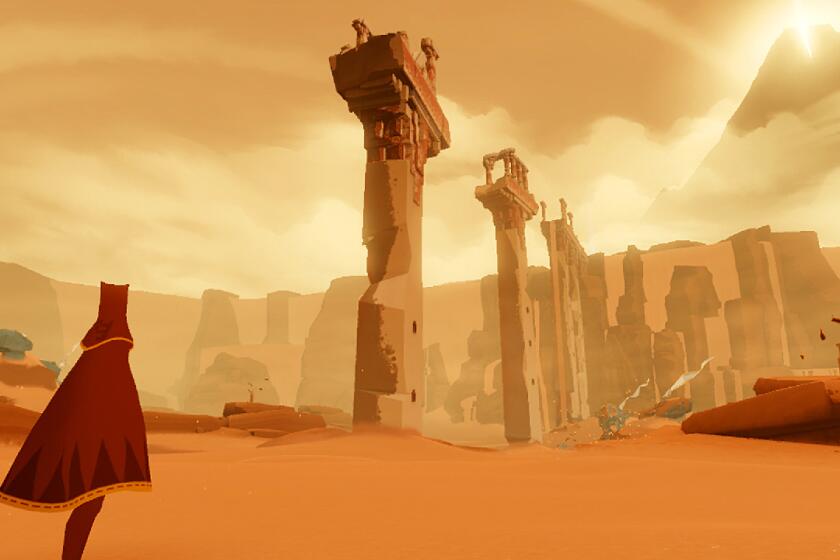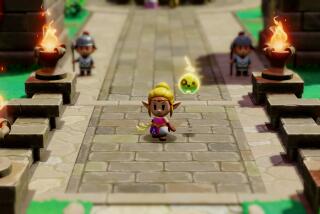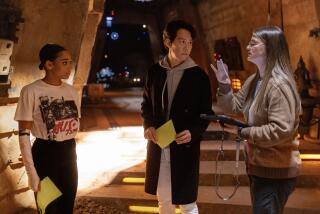How the ‘Halo’ TV series misunderstands the video game’s fans
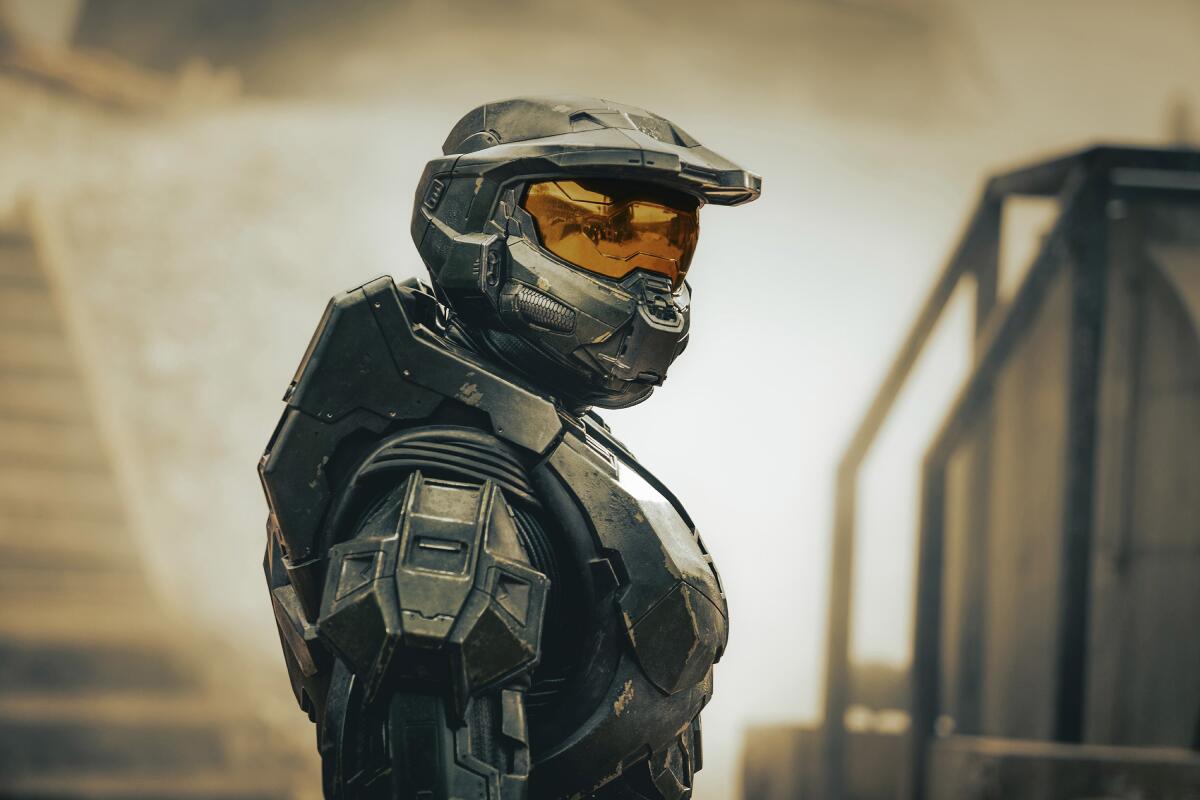
Ask Master Chief a difficult question, and the super-solider lead of “Halo” often has an answer at the ready: “I don’t know.” From early on in the Paramount+ series, adapted from the sci-fi-inspired video game space fantasy, the scientifically enhanced human doesn’t know much.
This is a video game trope.
Master Chief’s fuzzy memory is a common conceit in games, one so clichéd it’s stunning that it still happens. Opening an adventure with a hero who has somehow had his recollections wiped is a narrative shortcut to do away with the disconnect between player and character: Why would we be instructing someone to seek out answers to questions they know the answers to?
In television, however, we don’t need to see ourselves as Master Chief to want to wield a virtual space gun. We simply need to find him interesting. So while we may believe Master Chief when he pleads ignorance — thanks go to Pablo Schreiber, who, like Pedro Pascal in “The Mandalorian,” is emotionally vulnerable and existentially curious when the mask comes off — let us hope that this loss of introspection isn’t a permanent fixture.
The space opera fantasy returns in ‘Halo Infinite’ with Master Chief, a grappling hook, cheesy dialogue and a gorgeous vast world that’s pulpy and timeless.
Ultimately, the problem of “Halo” the TV series is an even more fundamental one: In making its central mystery not “Who is Master Chief?” but “What is Master Chief?” it shifts “Halo” from a character-driven story to a plot-driven one.
But the games didn’t begin to delve deep into Master Chief’s personality until Microsoft’s 343 Industries took over the series with 2012’s “Halo 4.” There’s a hurried nature to the first two episodes of the TV series, as if to fast-forward to this more personal era of the franchise — and it means a significant amount of information is thrown at the viewer.
There are the so-called good guys of the United Nations Space Command (UNSC), who may not be so good after all. There’s the orchestrator of the super-solider program, far-from-subtle schemer Dr. Catherine Halsey (Natascha McElhone). There’s an alien race known as the Covenant after a powerful relic, which just so happens to be giving Master Chief memories. Oh, and there’s an intergalactic war going on between the UNSC and human rebels, who we’re clearly meant to sympathize with over the army of space marines.
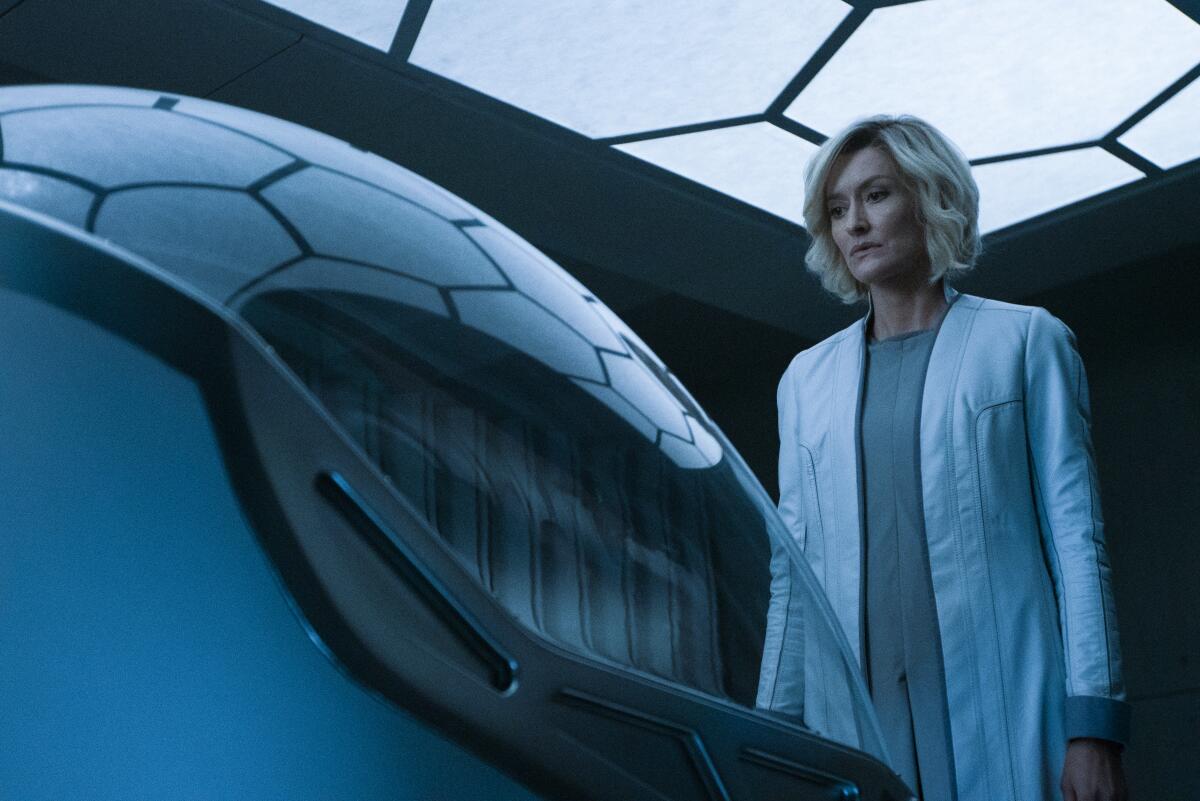
While this outline nobly challenges the patriotism of the initial “Halo” games — we’re in a more cynical age when it comes to the military-industrial complex than we were in the the early 2000s when “Halo” first arrived — all of this exposition forces “Halo” to define its characters broadly. Master Chief is the killing machine with a conscience, Halsey is a most sinister mother figure , the young rebel Kwan Ha (Yerin Ha) serves to instigate Chief’s moral awakening and the Covenant aliens are fighting a theological war no one quite understands yet (but it does lead them to murder, unprovoked, human outposts on random planets).
If this all sounds like a lot, that’s because it is: “Halo” now spans six core games and spinoffs, as well as 30 or so novels, and the TV series has been in development for more than a decade trying to make sense of it.
In the process, the series loses some of the silliness that distinguished “Halo” from the more frantic “Doom” and the most self-serious “Call of Duty.” (Aliens taunt the player as if they’re in a WWE match rather than an intergalactic war, for one.) Developed by Kyle Killen (“Mind Games”) and Steven Kane (“The Last Ship”), the Paramount+ version makes it clear from the outset that the tone here won’t be so lighthearted; in the opening moments an oversized lizard of an alien — this is the Covenant — pulverizes a teenager’s body with a laser gun. This dismemberment is a shock to those used to the more cartoon-like violence of the games.

It will be curious to watch the temper of the series as it develops. In the world of video games, it makes perfect sense for a character to run and hide after taking a few bullets to wait for an energy bar to replenish. When that happened in the first episode of the series, complete with the game’s audible whoosh, I bought it — but I speak “Halo” and want any interpretation of it to maintain some hint of corniness. In fact, I’d welcome more of the latter, and it was relief when the Covenant leader looked like a creation inspired by the Jim Henson mold.
There’s a long history of video game adaptations that try to walk the line between the dedicated fans and the uninitiated. It’s hard here to shake the sense that producers and writers desperately want to appeal to those who already have played and watched the definitive “Halo” experience — it’s the recently released “Halo Infinite” — as well as those who skipped the games but want to see what all the fuss is about.
The complete guide to home viewing
Get Screen Gab for everything about the TV shows and streaming movies everyone’s talking about.
You may occasionally receive promotional content from the Los Angeles Times.
But this is the wrong ambition. “Halo,” as vital a video-game text as “Super Mario Bros.” and the title that has come to symbolize the modern shooter, is already a blockbuster. And it’s full of transmedia content with a built-in audience that simply wants more.
The goal shouldn’t be about being everything to everyone, and while “Halo” treats the source material with respect, it does so with a tentativeness, as if it is afraid to miss a key element. There’s time for “Halo” to find its groove. But when the second episode concludes with a tease of the incredibly important game character of Cortana — Master Chief’s holographic companion, with whom he develops a co-dependent relationship (yes, it’s weird) — it’s hard not to worry that these initial nine episodes will unfold like a “greatest hits” of the game.
That’s playing it safe rather than being at peace with the fact that “Halo” diehards already have their favorite “Halo.” And it isn’t a TV series.
'Halo'
The Peabody Awards unveiled its first winners for digital and interactive storytelling. Honorees included “Journey” and “Papers, Please.”
More to Read
The complete guide to home viewing
Get Screen Gab for everything about the TV shows and streaming movies everyone’s talking about.
You may occasionally receive promotional content from the Los Angeles Times.
